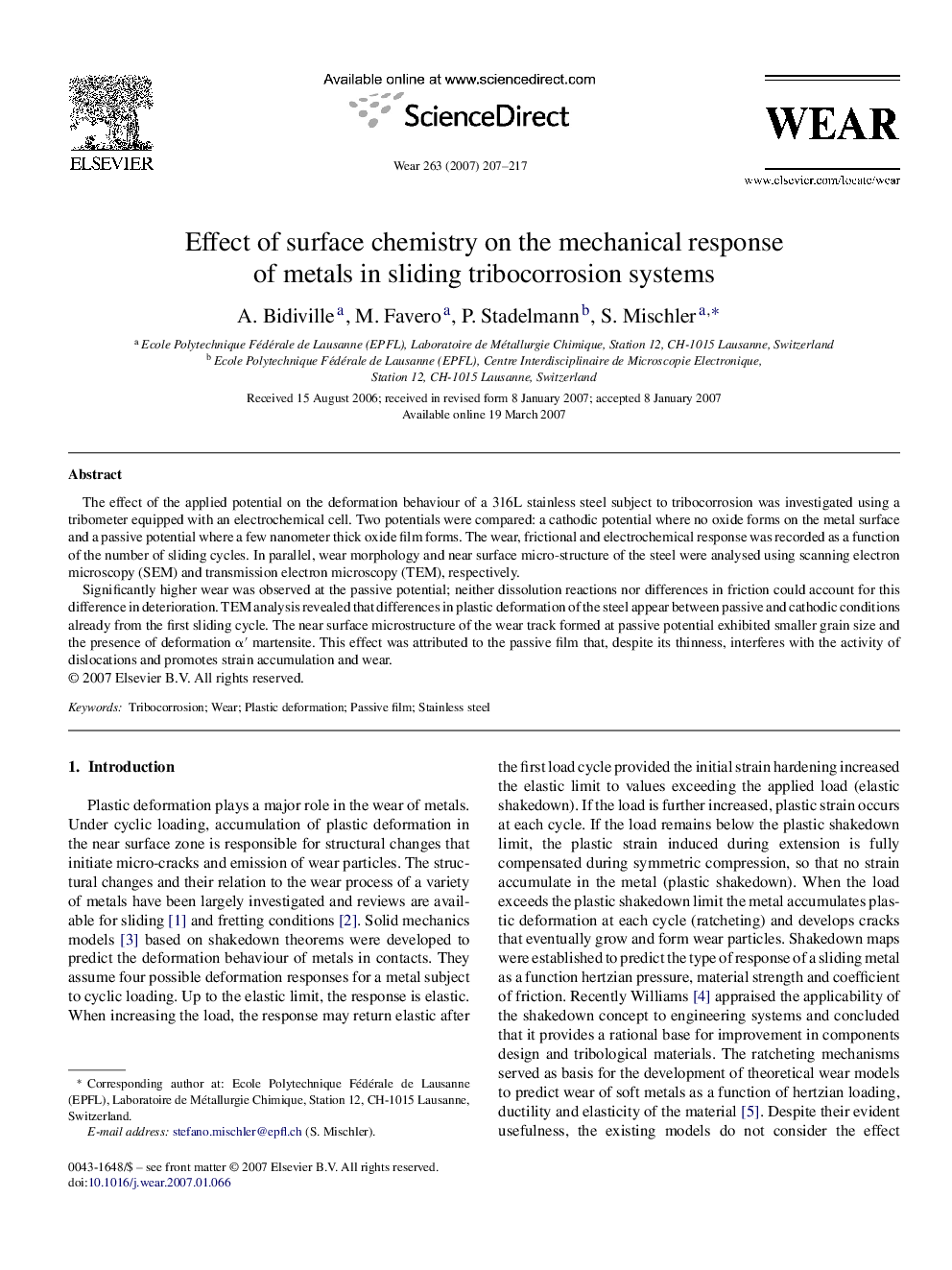| Article ID | Journal | Published Year | Pages | File Type |
|---|---|---|---|---|
| 619816 | Wear | 2007 | 11 Pages |
Abstract
Significantly higher wear was observed at the passive potential; neither dissolution reactions nor differences in friction could account for this difference in deterioration. TEM analysis revealed that differences in plastic deformation of the steel appear between passive and cathodic conditions already from the first sliding cycle. The near surface microstructure of the wear track formed at passive potential exhibited smaller grain size and the presence of deformation αⲠmartensite. This effect was attributed to the passive film that, despite its thinness, interferes with the activity of dislocations and promotes strain accumulation and wear.
Related Topics
Physical Sciences and Engineering
Chemical Engineering
Colloid and Surface Chemistry
Authors
A. Bidiville, M. Favero, P. Stadelmann, S. Mischler,
